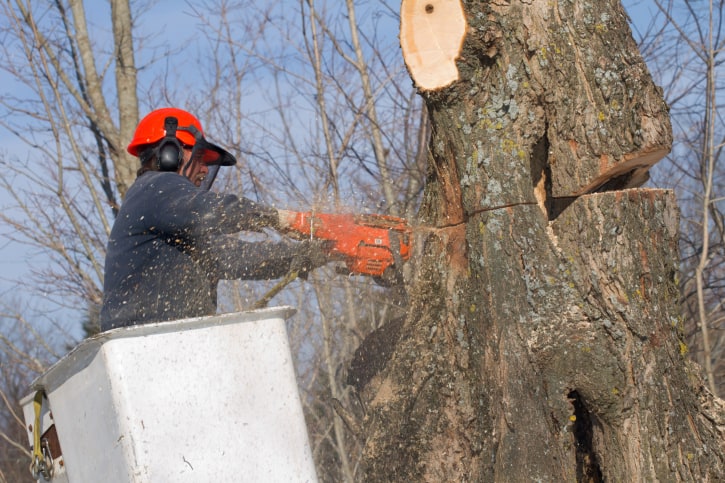Featured
Table of Contents
- – Household Tree Removal Costs In Duluth, MN
- – Hidden Arborist Costs In Duluth, MN: What To W...
- – Local vs National Tree Clearing Costs In Dulu...
- – Duluth, MN Arborist Cost Savings
- – Seasonal Tree Service Costs In Duluth, MN
- – Upfront Stump Removal Costs In Duluth, MN: No...
- – Duluth, MN Tree Trimming Prices: Complete Guide
- – Top Tree Service Prices In Duluth, MN
- – How Much Does A Stump Grinding Cost In Dulut...
- – Duluth, MN Tree Trimming Warranties: What's ...
- – Best-Reviewed Tree Clearing In Duluth, MN: P...
- – Top Arborist Prices In Duluth, MN
- – Smart Arborist Costs In Duluth, MN
- – Best Tree Removal Costs In Duluth, MN
- – Duluth, MN Tree Trimming Payment Options

The subsections listed below supply more comprehensive details about rates, consisting of a typical variety for each. TypeAverage Removal CostPineConiferPalmMagnoliaArborvitaeAshCedarSweet GumEucalyptusSycamoreCypressOakMaplePoplar You can anticipate to pay in between to remove a pine, depending upon its size. Eliminating a pine is among the more cost effective tasks unless it is one that has actually been around for several years and is rather large.
Household Tree Removal Costs In Duluth, MN
Pines also have a tap root that grows deep into the soil, which can prove to be more difficult to get rid of. The process itself involves a specialist cutting the tree, clearing the base, cutting the surface roots, removing the stump, and lastly dealing with the soil. Without a professional hand, you run the risk of leaving pine seedlings behind, which will fall from the roots of distressed pines.
Hidden Arborist Costs In Duluth, MN: What To Watch For
The U.S. nationwide average for conifer elimination is around to have the conifer reduced, carried away, and the stump ground or removed entirely. Conifers are typically simpler to eliminate, and despite the fact that they can grow rather tall, they do not cost a fortune to get rid of. Conifers consist of pine, spruce, fir, and juniper trees.
Local vs National Tree Clearing Costs In Duluth, MN
While conifers are lovely, they eliminate native plants and particular types of yard (stump removal). The typical cost of palm removal depends on the height as much as the type, ranging from.
Duluth, MN Arborist Cost Savings
That is why it is essential to know which type you are removing. While you do not need an herbicide to kill a palm tree, there are some actions your elimination professional will have to take to guarantee the task is done correctly. There are two ways they can eliminate them: by chopping them down or digging them up.
Seasonal Tree Service Costs In Duluth, MN
This is because little animals like rats and scorpions frequently reside in them. Plus, numerous types will have spikes, too. From there, they get rid of the actual tree and then the stump. Anticipate to pay in between to eliminate this kind of tree, depending upon the exact size and details of the job.
Upfront Stump Removal Costs In Duluth, MN: No Hidden Fees
There are 3 types: green, white, and black ash. White ash is understood for its many colors. With its gray-tinged bark, its leaves are green or purple in the spring and golden yellow or purplish-red in the fall. They enjoy moderate environments and lots of sun. The green ash is named such due to its green or yellow foliage.
Duluth, MN Tree Trimming Prices: Complete Guide

The bark is softer, and it flowers later in the year - arborist. Due to the variation in height, the removal rate difference is broad from. A coniferous, evergreen tree, the cedar is a sturdy types. True cedars delight in higher elevations, generally in the Himalayas and the Mediterranean. A real cedar can grow as high as 160 feet in height and is frequently planted in the United States as a landscape option.
Top Tree Service Prices In Duluth, MN
The growth of incorrect cedars differs from 50 feet as much as 230 feet high. Property owners may pay anywhere from, depending on the roots. With star-shaped leaves and spectacular fall colors, the sweet gum is considered a medium to large tree. Taking pleasure in complete sun, the sweet gum can not endure pollution.
How Much Does A Stump Grinding Cost In Duluth, MN
It has a big root base of 40 to 50 feet, which affects the elimination expense. Normally, it costs between to remove a eucalyptus. Eucalyptus are not typical all over, but they are quite large compared to others, which is why even the smaller ones are so costly to remove. Originally from Australia, eucalyptus are invasive plants that grow in thick groves that secure native plants.
Duluth, MN Tree Trimming Warranties: What's Covered
There are a handful of methods to do this, including burning, pulling, grinding, or killing them with herbicide. Anticipate to pay between to get rid of sycamores, based upon the height, trunk size, and quantity of work included. Sycamores are one of the biggest hardwood trees, normally varying from 60 to 100 feet high and as wide as 15 feet.
Best-Reviewed Tree Clearing In Duluth, MN: Pricing
The first two actions will expose the within the tree and cut off the flow of nutrients up the trunk. From there, an expert applies herbicide to eliminate the tree and lower the trunk. They will eliminate the stump. Otherwise, new sprouts may grow from it. Lowering and eliminating a full-grown cypress might cost as much as.
Top Arborist Prices In Duluth, MN
There are numerous various kinds of Cypress trees, however the most common are the Leyland, Arizona, Bald, and Italian. The Bald Cypress grows in swampy or really wet locations while the others enjoy a dry, warm, or hot climate (arborist). They can grow as tall as 80 to 100 feet high
Smart Arborist Costs In Duluth, MN

Prone to illness, the Cypress is one of the most treasured woods for furnishings. The typical oak grows to around 60 feet, and depending upon the complexity of the elimination, it costs approximately to get rid of. The exact size of your oak and the effort needed to fell it affect what you will in fact pay for elimination along with any additional services like stump grinding.
Best Tree Removal Costs In Duluth, MN
Access to the trees and the roots will likewise impact the general expense. Maples are generally amongst the more expensive trees to remove due to the fact that of their size and the work included in the elimination.
Duluth, MN Tree Trimming Payment Options
Growing as high as 90 to 115 feet, these enormous lumbers are generally found in North America and include the aspen, cottonwood, and balsam trees. The process to get rid of trees includes all the trimming and cutting of the branches and trunk, bringing it down to a stump.
Table of Contents
- – Household Tree Removal Costs In Duluth, MN
- – Hidden Arborist Costs In Duluth, MN: What To W...
- – Local vs National Tree Clearing Costs In Dulu...
- – Duluth, MN Arborist Cost Savings
- – Seasonal Tree Service Costs In Duluth, MN
- – Upfront Stump Removal Costs In Duluth, MN: No...
- – Duluth, MN Tree Trimming Prices: Complete Guide
- – Top Tree Service Prices In Duluth, MN
- – How Much Does A Stump Grinding Cost In Dulut...
- – Duluth, MN Tree Trimming Warranties: What's ...
- – Best-Reviewed Tree Clearing In Duluth, MN: P...
- – Top Arborist Prices In Duluth, MN
- – Smart Arborist Costs In Duluth, MN
- – Best Tree Removal Costs In Duluth, MN
- – Duluth, MN Tree Trimming Payment Options
Latest Posts
Extra Stump Removal Costs In Moreno Valley, CA: What To Watch For
Avon Park, FL Tree Trimming: Real Cost Breakdown
Comparing Bowie, TX Arborist: Prices
More
Latest Posts
Extra Stump Removal Costs In Moreno Valley, CA: What To Watch For
Avon Park, FL Tree Trimming: Real Cost Breakdown
Comparing Bowie, TX Arborist: Prices